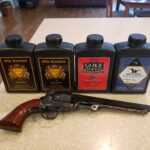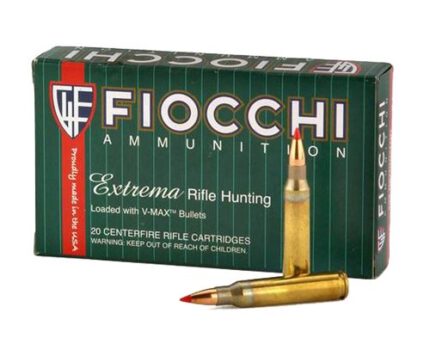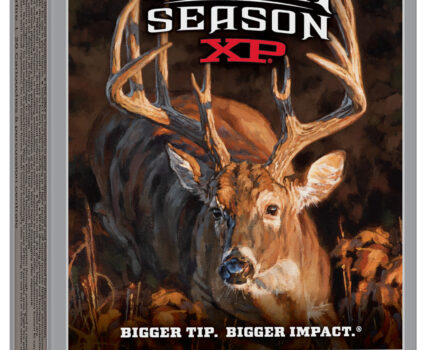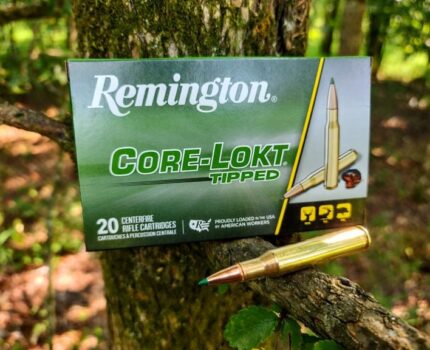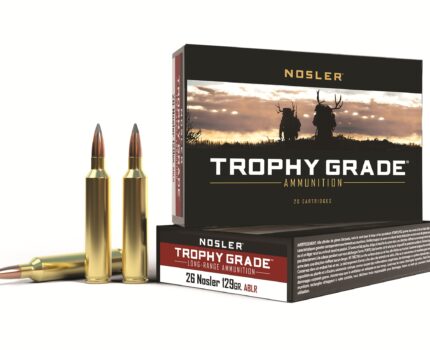Ammunition
Ammunition refers to the various types of projectiles, such as bullets or shells, along with their propellants, that are used in firearms, cannons, and other weapons. Ammunition is designed to be loaded into a weapon and fired to inflict damage on a target.
Here are some key points about ammunition:
1. Components: Ammunition typically consists of several components, including a projectile (such as a bullet or shell), a propellant (such as gunpowder), and a primer (a small explosive charge that ignites the propellant).
2. Types of Ammunition: There are various types of ammunition designed for different purposes and weapons. Some common types include small-caliber ammunition for handguns and rifles, shotgun shells for shotguns, and artillery shells for cannons.
3. Caliber: Ammunition is often classified by its caliber, which refers to the internal diameter of the firearm's barrel. The caliber determines the size of the ammunition that can be used in a particular firearm.
4. Cartridges: Ammunition is usually packaged in cartridges, which are self-contained units that hold the projectile, propellant, and primer. Cartridges are designed for easy loading and firing in compatible firearms.
5. Ballistics: Ammunition is designed with specific ballistics characteristics, including factors such as velocity, trajectory, and penetration power. These characteristics determine how the projectile behaves in flight and upon impact with a target.
6. Safety: Handling ammunition requires caution and adherence to safety protocols. It should be stored in a secure and dry location, away from heat sources or open flames. Proper storage and handling help prevent accidents and ensure its effectiveness.
It's important to note that laws and regulations regarding the purchase, possession, and use of ammunition can vary between countries and regions. If you have specific questions about ammunition regulations, it's best to consult the laws of your jurisdiction or seek guidance from local authorities.
Types Of Ammunition List
Certainly! Here's a list of some common types of ammunition:
1. Handgun Ammunition:
- 9mm Parabellum
- .45 ACP (Automatic Colt Pistol)
- .40 S&W (Smith & Wesson)
- .380 ACP
- .357 Magnum
- .38 Special

Ammunition | Ammunition Depot | Rifle Ammunition | Rifle Ammo | Cheap Ammo | Bulk Ammo | Bulk Ammunition & Shooting Supplies | Ammo Depot Canada | Ammo Depot | German Ammunition Depot | Russian Ammunition Depot | Ammunition | Handgun, Shotgun & Rifle Ammo | Where to Buy Ammo
2. Rifle Ammunition:
- .223 Remington / 5.56x45mm NATO
- .308 Winchester / 7.62x51mm NATO
- .30-06 Springfield
- 7.62x39mm
- .270 Winchester
- .243 Winchester

Rifle Ammunition
3. Shotgun Ammunition:
- 12 gauge
- 20 gauge
- .410 bore
4. Rimfire Ammunition:
- .22 LR (Long Rifle)
- .17 HMR (Hornady Magnum Rimfire)
- .22 WMR (Winchester Magnum Rimfire)

Rimfire Ammunition
5. Sniper/Military Ammunition:
- .50 BMG (Browning Machine Gun)
- 7.62x54mmR
- 7.62x51mm NATO
- 5.56x45mm NATO
- 7.62x39mm
- 5.45x39mm

Sniper Ammunition
6. Specialty Ammunition:
- Armor-piercing (AP)
- Incendiary
- Hollow point (HP)
- Full metal jacket (FMJ)
- Frangible
- Tracer

Specialty Ammunition
Please note that this is not an exhaustive list, and there are many other types and variations of ammunition available for different firearms and purposes. Additionally, availability and legality of specific types of ammunition may vary depending on your location.
9mm Parabellum - 9mm Luger
9mm Parabellum, also known as 9mm Luger or 9x19mm, is one of the most widely used handgun cartridges in the world. It was developed by German firearms designer Georg Luger in the early 20th century and has since become a popular choice for military, law enforcement, and civilian use. Here are some key details about 9mm Parabellum ammunition:
1. Cartridge Dimensions: The 9mm Parabellum cartridge has a bullet diameter of 9mm (.355 inches) and a case length of 19mm. The overall length of a typical 9mm Parabellum round is around 29mm.
2. Bullet Types: 9mm Parabellum ammunition is available in various bullet types, including full metal jacket (FMJ), jacketed hollow point (JHP), and specialty loads such as frangible or +P (higher pressure) variants.
3. Ballistics: The 9mm Parabellum is known for its relatively high velocity and manageable recoil. Typical factory loads have muzzle velocities ranging from around 1,000 to 1,200 feet per second (fps) and muzzle energies between 300 and 400 foot-pounds (ft-lbs).
4. Magazine Capacity: One advantage of the 9mm Parabellum is its relatively small size, which allows for higher magazine capacities compared to larger caliber handguns. Many modern semi-automatic pistols chambered in 9mm can hold 15 or more rounds in a standard magazine.
5. Military and Law Enforcement Use: The 9mm Parabellum has been adopted by numerous military and law enforcement agencies worldwide. Its effectiveness, controllability, and high magazine capacity make it a popular choice for these applications.
6. Civilian Use: The 9mm Parabellum is widely used by civilians for self-defense, target shooting, and competition shooting. Its popularity is attributed to its availability, affordability, and manageable recoil.
.45 ACP (Automatic Colt Pistol) - .45 ACP Ammo
The .45 ACP (Automatic Colt Pistol) is a popular handgun cartridge that was developed by John Browning in the early 20th century for use in semi-automatic pistols. It has since become one of the most iconic and widely used cartridges for self-defense, law enforcement, and military applications. Here are some key details about the .45 ACP ammunition:
1. Cartridge Dimensions: The .45 ACP cartridge has a bullet diameter of .451-.452 inches and a case length of .898 inches. The overall length of a typical .45 ACP round is around 1.275 inches.
2. Bullet Types: .45 ACP ammunition is available in various bullet types, including full metal jacket (FMJ), jacketed hollow point (JHP), and specialty loads such as +P (higher pressure) variants or frangible rounds.
3. Ballistics: The .45 ACP is known for its larger bullet size and heavier weight compared to other popular handgun cartridges. Typical factory loads have muzzle velocities ranging from around 800 to 950 feet per second (fps) and muzzle energies between 350 and 500 foot-pounds (ft-lbs). The larger bullet size contributes to its reputation for strong stopping power and penetration.
4. Magazine Capacity: Due to the larger size of the .45 ACP cartridge, handguns chambered in .45 ACP generally have lower magazine capacities compared to smaller caliber options. Standard magazines for .45 ACP pistols typically hold 7 to 10 rounds, although extended magazines with higher capacities are also available.
5. Military and Law Enforcement Use: The .45 ACP was the standard issue cartridge for the United States military's M1911 pistol for many years, and it has been used by various law enforcement agencies around the world. While it has been largely replaced by 9mm in many military and law enforcement applications, the .45 ACP remains popular among certain units and individuals who prioritize its stopping power.
6. Civilian Use: The .45 ACP is widely used by civilians for self-defense, target shooting, and competition shooting. Its reputation for larger bullet size and stopping power has made it a favored choice for many individuals who prefer a more substantial round.
As with any ammunition, it's important to follow the manufacturer's recommendations and use the appropriate ammunition for your specific firearm.
Ammunition Chart Smallest To Largest
Below is a chart listing some common handgun and rifle ammunition, arranged from smallest to largest:
1. .22 LR (Long Rifle)
2. .25 ACP (Automatic Colt Pistol)
3. .32 ACP (Automatic Colt Pistol)
4. .380 ACP (Automatic Colt Pistol)
5. 9mm Parabellum
6. .38 Special
7. .357 Magnum
8. .40 S&W (Smith & Wesson)
9. 10mm Auto
10. .45 ACP (Automatic Colt Pistol)
11. .44 Magnum
12. .50 AE (Action Express)
.357 Magnum - .357 Magnum Ammo
The .357 Magnum is a powerful and popular revolver cartridge known for its high velocity, accuracy, and stopping power. It was developed in the early 1930s by Elmer Keith, Phillip B. Sharpe, and Colonel D. B. Wesson of Smith & Wesson. Here are some key details about the .357 Magnum ammunition:
1. Cartridge Dimensions: The .357 Magnum cartridge has a bullet diameter of .357 inches and a case length of 1.29 inches. The overall length of a typical .357 Magnum round is around 1.59 inches.
2. Bullet Types: .357 Magnum ammunition is available in various bullet types, including full metal jacket (FMJ), jacketed hollow point (JHP), and specialty loads such as soft-point (SP) or semi-jacketed hollow point (SJHP).
3. Ballistics: The .357 Magnum is known for its high muzzle velocity and energy. Typical factory loads have muzzle velocities ranging from around 1,200 to 1,600 feet per second (fps) and muzzle energies between 500 and 800 foot-pounds (ft-lbs). These ballistics contribute to its reputation for excellent penetration and terminal performance.
4. Revolver Compatibility: The .357 Magnum cartridge is primarily chambered in revolvers, although some lever-action rifles are also available in this caliber. Revolvers chambered in .357 Magnum can often handle .38 Special ammunition as well, which offers lower recoil and cost-effective practice options.
5. Self-Defense and Hunting: The .357 Magnum is a popular choice for self-defense due to its potent stopping power and ability to effectively incapacitate a threat. It is also suitable for hunting small to medium-sized game at relatively short distances.
6. Versatility: The .357 Magnum cartridge offers shooters the flexibility to shoot .38 Special ammunition, which is less powerful and generates less recoil. This versatility makes it appealing to a wide range of shooters who can choose between different power levels based on their preferences and needs.
As always, consult the manufacturer's recommendations and use the appropriate ammunition for your specific firearm.






